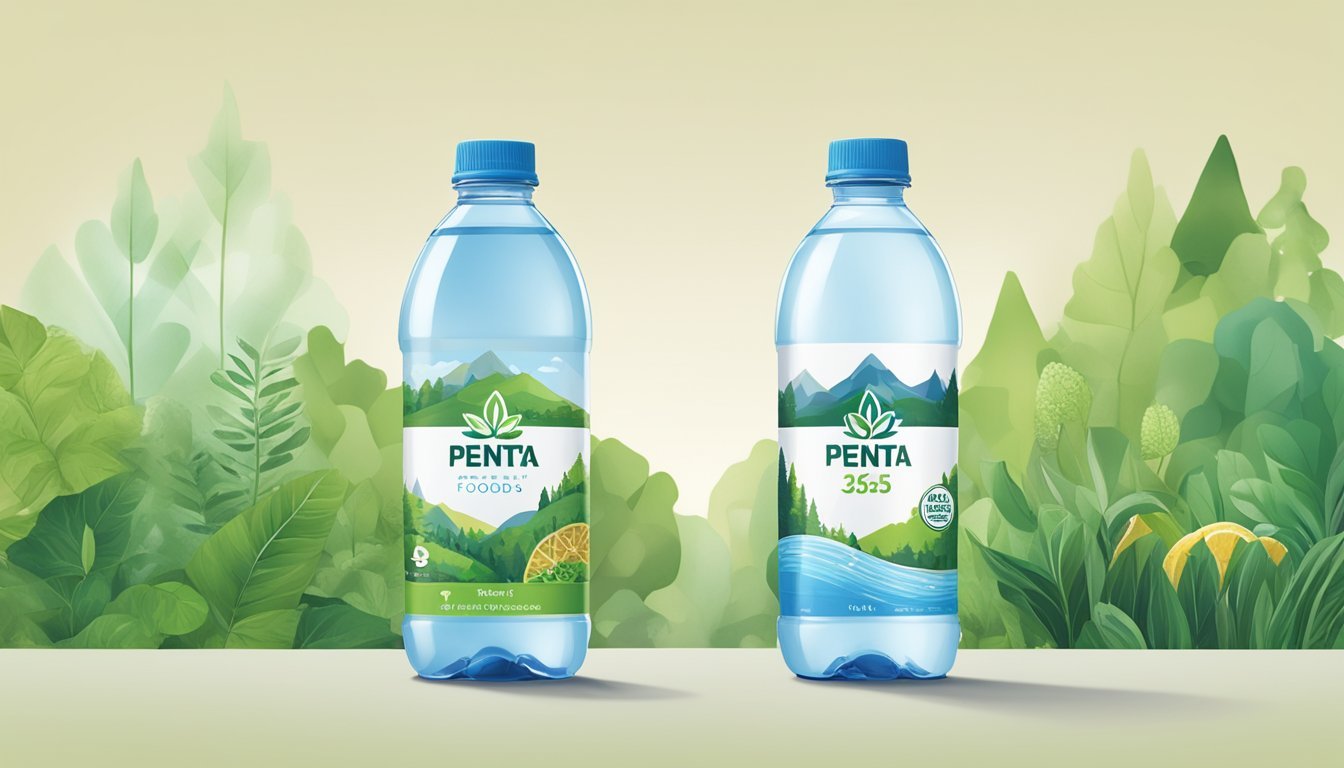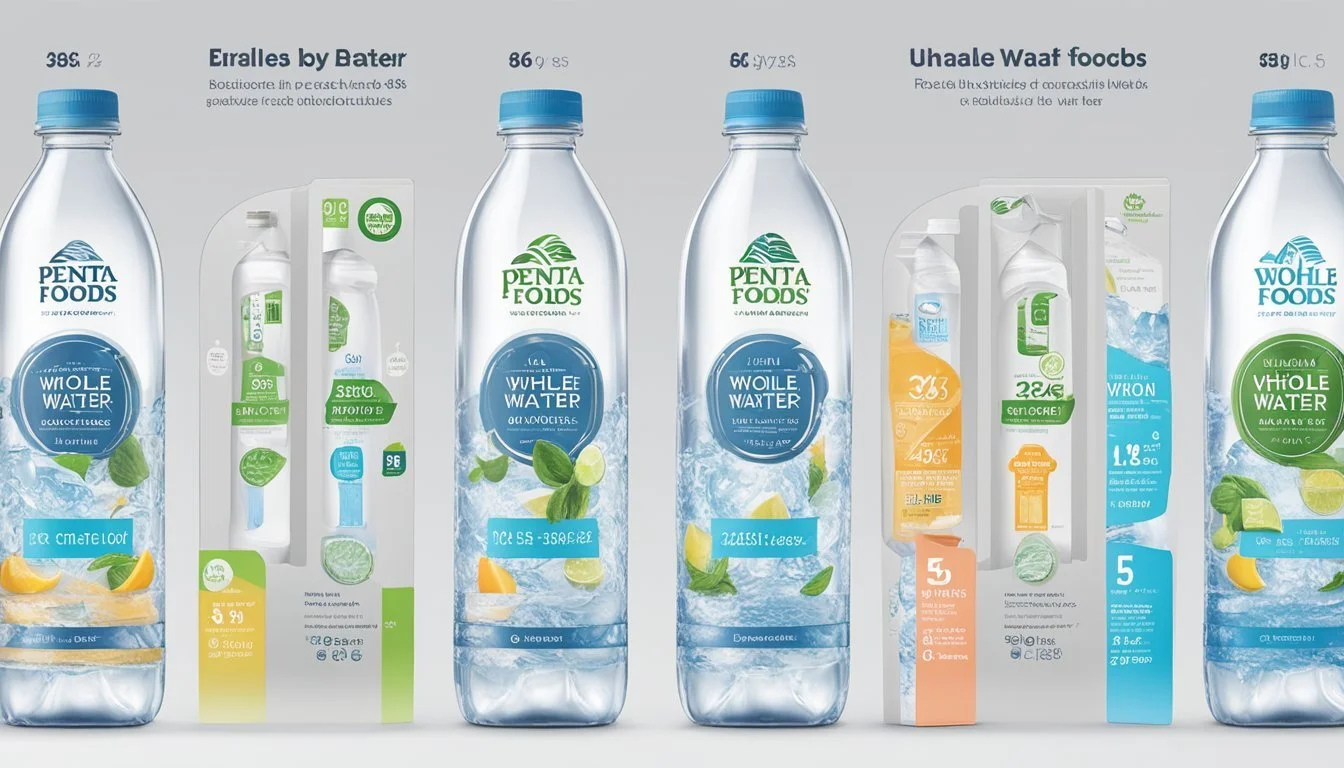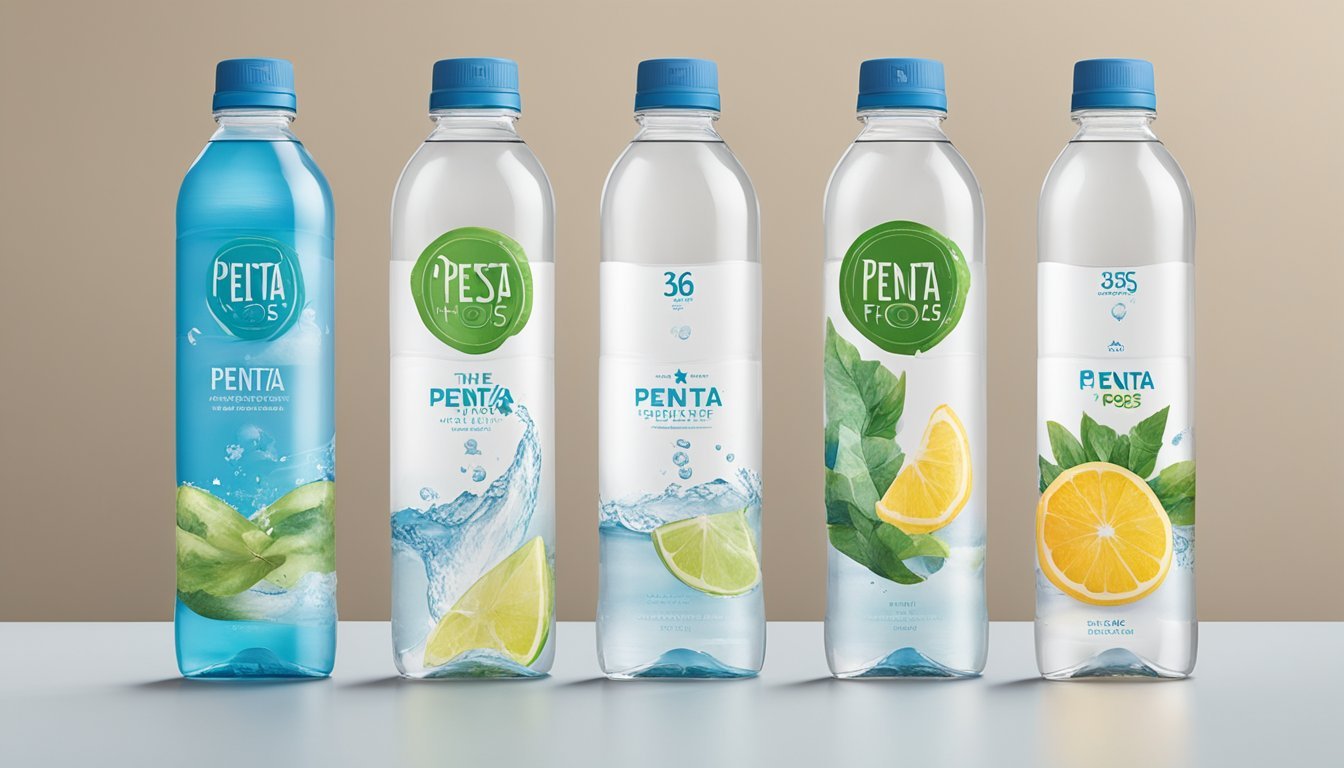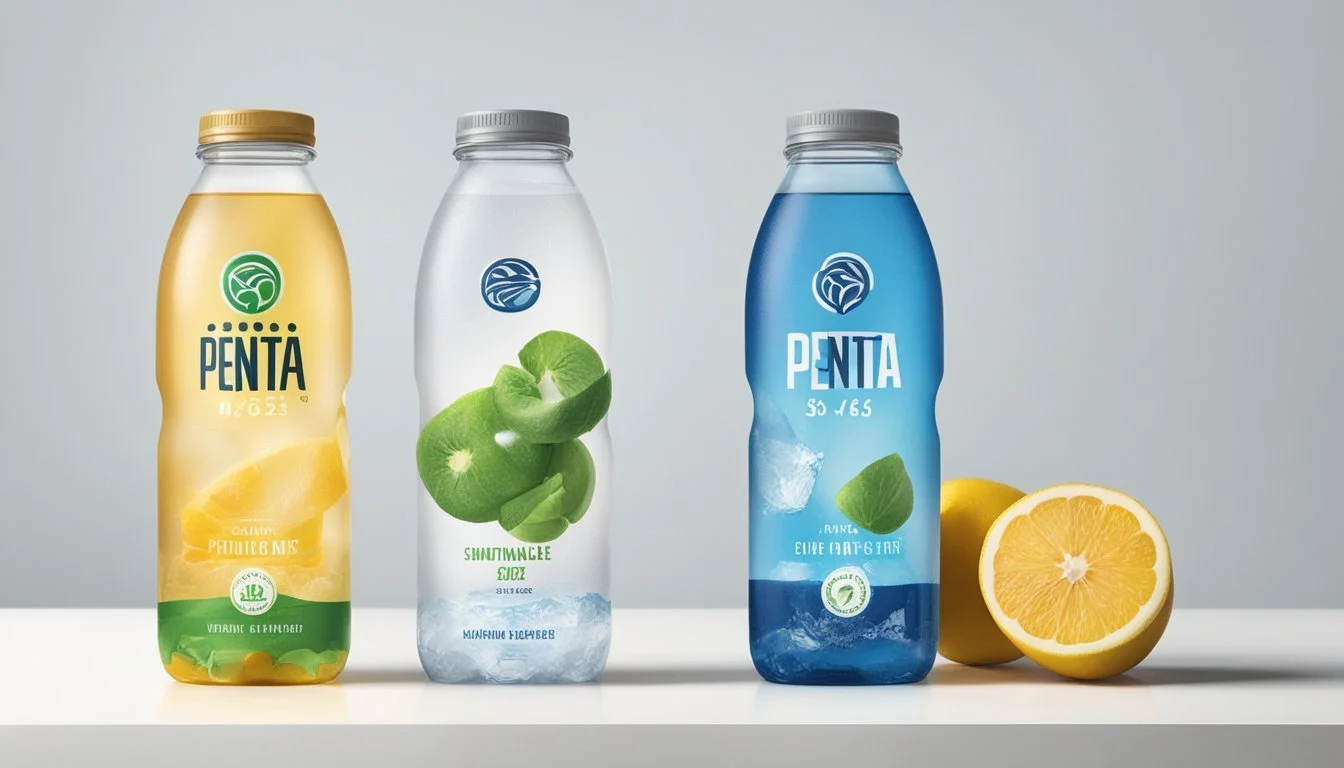Penta vs. Whole Foods 365
Comparing Premium Bottled Water Brands
When it comes to choosing bottled water, Penta and Whole Foods 365 offer distinct options that cater to different tastes and preferences. Penta is known for its ultra-pure profile, created through an extensive 11-hour, 13-step purification process. This meticulous filtration aims to deliver a clean taste that closely resembles tap water, while also promoting potential skincare benefits due to its purity.
Whole Foods 365, on the other hand, is a spring water that, despite its natural source, often gets compared with average purified waters. Price-wise, Whole Foods 365 is quite affordable, making it a budget-friendly choice at around 69 cents per bottle. However, its taste is described as somewhat sour with a dry aftertaste, which may not appeal to everyone.
For those seeking the purest form of hydration and potential additional benefits like improved skin, Penta stands out as the better choice. Conversely, if affordability and accessibility are higher priorities, Whole Foods 365 provides a convenient option, though with a potentially less appealing flavor profile. Each offers unique attributes that cater to different preferences and needs.
Comparing Penta and Whole Foods 365 Bottled Water
Penta and Whole Foods 365 are popular bottled water brands with distinct origins, purification processes, and packaging strategies. This section explores these elements to help understand their differences and similarities more clearly.
Brand Origins and Credibility
Penta water is marketed as ultrapure, focusing on its intensive purification process. It does not derive from a particular spring but undergoes a 13-step process, including reverse osmosis and ultraviolet light treatment. This meticulous process aims to remove impurities and improve water quality.
Whole Foods 365, on the other hand, is branded under the Whole Foods Market umbrella. Known for natural and organic products, this brand emphasizes natural spring water sources, promoting transparency in sourcing and quality. They offer a moderate price point, catering to a wide customer base.
Water Source and Purification Process
Penta utilizes municipal water sources which are heavily purified through reverse osmosis, deionization, and UV treatment. Their process is designed to deliver ultrapure water, ensuring the removal of any potential contaminants or impurities. This makes Penta different from typical spring waters which are less processed.
Whole Foods 365 sources its water from various natural springs. The use of spring water aligns with the brand’s commitment to natural products. The water is filtered and sometimes undergoes additional purification to ensure it meets the brand’s standards, but the process is less intense compared to Penta.
Packaging Materials
Penta opts for plastic bottles, focusing on clarity and purity in packaging. While they ensure their bottles are BPA-free, the use of plastic raises environmental concerns despite recyclability.
Whole Foods 365 offers water in both plastic and glass options, catering to a broader audience. Glass bottles are more environmentally friendly but heavier and fragile. The brand’s commitment to sustainability is evident in their diversified packaging, providing consumers with choices that may align with more eco-friendly preferences.
Nutritional Analysis
When comparing Penta and Whole Foods 365 bottled water, several factors come into play, such as essential mineral content and the presence of contaminants. Here's a detailed look into what each brand provides.
Essential Mineral Content
Penta:
Contains minimal minerals.
Marketed as ultra-purified water through a 13-step process.
Lacks natural electrolytes often found in spring waters.
Whole Foods 365:
Classified as spring water.
Contains natural minerals including potassium and magnesium.
Has a slight dry aftertaste reported by consumers.
While Penta offers ultra-purification, Whole Foods 365 provides essential minerals beneficial for hydration and overall health. The specific essential minerals like potassium and magnesium in Whole Foods 365 help in maintaining electrolyte balance.
Presence of Contaminants
Penta:
No significant reports of contamination.
Emphasizes a rigorous filtration process.
Whole Foods 365:
Contains trace PFAS chemicals, according to Consumer Reports.
PFAS (per- and polyfluoroalkyl substances) may pose long-term health risks.
Penta’s extensive purification process ensures low contaminant levels. On the other hand, Whole Foods 365's trace presence of PFAS chemicals could be concerning for some consumers. However, it meets the safety standards set by the FDA, ensuring it remains safe for drinking.
In summary, Penta focuses on purity with minimal minerals, while Whole Foods 365 provides beneficial natural minerals but has minor contamination concerns with PFAS. The choice between them depends on individual priorities regarding minerals and contaminant levels.
Tasting Notes
Tasting notes highlight the key differences in flavor profile and pH level between Penta and Whole Foods 365 bottled water. Both factors significantly impact the overall drinking experience.
Flavor Profile Comparison
Penta offers a crisp, clean taste. This purity comes from its 13-step, 11-hour purification process. It closely mimics the taste of natural tap water, making it a favorite for those sensitive to mineral flavors. There’s no noticeable aftertaste, which adds to its appeal.
Whole Foods 365, on the other hand, has a more typical spring water taste. Some reviews mention a slight sourness and a dry aftertaste. This could be due to its mineral content, which gives it a more complex flavor profile compared to Penta.
pH Level and Its Impact on Taste
Penta is known for its ultra-pure composition, but its pH level can vary. Ideally, its pH is around 7, making it neutral, which contributes to its clean and refreshing taste profile.
Whole Foods 365 typically has a pH level that is slightly more acidic. This acidity can lead to the sour notes that some consumers have noticed. The pH level of water can greatly influence its taste, affecting how refreshing it feels.
By understanding these tasting notes, one can better appreciate the distinct experiences offered by Penta and Whole Foods 365 bottled waters. Each offers unique characteristics depending on personal preferences for flavor and pH balance.
Environmental and Health Considerations
When comparing Penta and Whole Foods 365 bottled water, it's essential to weigh both environmental impact and health benefits. Understanding these factors can help consumers make more informed decisions about their water choices.
Eco-Friendly Practices
Penta emphasizes its commitment to sustainability by using BPA-free plastic bottles and reducing its carbon footprint through efficient production methods. They aim to minimize waste by encouraging recycling and using less plastic per bottle. These practices align with environmentally friendly goals.
Whole Foods 365 also supports eco-conscious efforts. Their bottles are made from 100% recycled plastic, illustrating a strong move towards reducing plastic waste. Whole Foods adheres to guidelines set by the International Bottled Water Association, further supporting sustainable practices within their supply chain.
Health Implications
Penta water undergoes a 13-step purification process, removing impurities to deliver highly purified water. It’s marketed for its potential health benefits, including better hydration and no added chemicals. The absence of electrolytes in Penta water might appeal to those seeking pure water without additives.
Whole Foods 365, on the other hand, often includes electrolyte-enhanced options. These provide additional minerals like sodium and potassium, which can benefit hydration levels, especially during intense physical activities. The federal government maintains strict oversight on bottled water, ensuring safety standards are met.
In recent studies, including those from Consumer Reports, bottled waters have faced scrutiny over PFAS levels. Both brands claim compliance with voluntary guidance and regulatory standards, focusing on consumer safety and well-being. Despite these measures, ongoing research and testing are crucial for continuous health assurance.
Price Point and Value Analysis
When comparing the price points of Penta and Whole Foods 365 bottled waters, clear differences emerge.
Penta Water, known for its minimalist design, is typically found in 1-liter bottles at Whole Foods. While the exact price can vary, it often costs around $2.50 per bottle.
365 Everyday Value Spring Water is much more budget-friendly. The 500 mL bottles are priced at $0.69 each, making it a cost-effective choice for everyday use.
For a quick glance:
Brand Type Size Price Penta Water Bottled Water 1 L $2.50 365 Everyday Value Spring Water 500 mL $0.69
Value and Quality
While Penta's higher price might suggest superior quality, the 365 Everyday Value brand offers substantial value for the cost-conscious consumer.
For those prioritizing cost-effectiveness, 365 Everyday Value is an economical choice without a significant compromise in quality. Sales trends indicate that budget-friendly options like 365 are gaining popularity, especially among regular buyers who cater to both quality and affordability.
In contrast, Penta appeals to those willing to pay more for perceived premium quality and unique branding.
Consumer Feedback and Brand Reputation
While many consumers have their preferences, understanding how each brand is viewed can help make a more informed choice. This section will break down customer reviews, sentiments, expert opinions, and endorsements for Penta and Whole Foods 365 bottled water.
Customer Reviews and Sentiments
Penta: Many customers highlight the minimalist packaging as a draw, while emphasizing the crisp, clean taste. Some feedback points to the higher price point compared to other bottled waters.
Whole Foods 365: Reviews often note that the 365 line provides good quality at a reasonable price. Some consumers appreciate the commitment to organic and sustainably sourced products. However, a few have mentioned inconsistent taste across batches.
Expert Opinions and Endorsements
Penta: Experts often praise Penta for its unique purification process and high-quality water. It has received positive remarks in various Best Water rankings, including from nutritionists and wellness experts who favor its purity.
Whole Foods 365: Consumer Reports has highlighted Whole Foods 365 for its traceability and adherence to quality standards. Experts appreciate the transparency in labeling and sourcing, often recommending it as a reliable choice for everyday hydration needs.
Final Verdict
Penta and Whole Foods 365 are two bottled waters catering to different preferences and needs.
Penta is known for its high purity. It undergoes a 13-step purification process which removes impurities. This makes it one of the purest bottled waters available. The absence of minerals might appeal to those who prefer a clean, crisp taste.
Whole Foods 365 is technically spring water but has been noted for having a taste similar to average purified waters. Some may find it sour with a dry aftertaste, which can be an acquired preference. At 69 cents per bottle, it's a budget-friendly choice without too many frills.
Quality Comparison
Feature Penta Whole Foods 365 Purity Extremely high, purified through 13 steps Spring water with natural minerals Taste Clean and crisp Sour with a dry aftertaste Price Premium cost 69 cents per bottle Source Municipal water Spring water
Penta offers premium-quality bottled water, while Whole Foods 365 provides a more affordable, everyday option. Each has its strengths, depending on what you're looking for. Whether it's the pure, clean taste of Penta or the accessible price and unique flavor of Whole Foods 365, both have their place in the bottled water market.
More About Penta
Mountain Valley Spring Water vs Penta: Which Bottled Water is Better?
Penta vs Richard's Rainwater: Which Bottled Water is Better?
Penta vs Whole Foods Italian Still Mineral water: Which Bottled Water is Better?
More About Whole Foods 365
Acqua Pana vs Whole Foods 365: Which Bottled Water is Better?
Alkaline88 vs Whole Foods 365: Which Bottled Water is Better?
Antipodes vs Whole Foods 365: Which Bottled Water is Better?
Aqua Carpatica vs Whole Foods 365: Which Bottled Water is Better?
Arrowhead vs Whole Foods 365: Which Bottled Water is Better?
Big Chill vs Whole Foods 365: Which Bottled Water is Better?
Boxed Water vs Whole Foods 365: Which Bottled Water is Better?
Cascade Mountain vs Whole Foods 365: Which Bottled Water is Better?
Castle Rock vs Whole Foods 365: Which Bottled Water is Better?
Core Hydration vs Whole Foods 365: Which Bottled Water is Better?
Crystal Geyser vs Whole Foods 365: Which Bottled Water is Better?
Deer Park vs Whole Foods 365: Which Bottled Water is Better?
Hawaii Volcanic vs Whole Foods 365: Which Bottled Water is Better?
Hawaiian Springs vs Whole Foods 365: Which Bottled Water is Better?
Ice Mountain vs Whole Foods 365: Which Bottled Water is Better?
Icelandic Glacial vs Whole Foods 365: Which Bottled Water is Better?
Just Water vs Whole Foods 365: Which Bottled Water is Better?
Liquid Death vs Whole Foods 365: Which Bottled Water is Better?
Mountain Valley Spring Water vs Whole Foods 365: Which Bottled Water is Better?
Nestle Pure Life vs Whole Foods 365: Which Bottled Water is Better?
Open Water vs Whole Foods 365: Which Bottled Water is Better?
Poland Spring vs Whole Foods 365: Which Bottled Water is Better?
Pure Life vs Whole Foods 365: Which Bottled Water is Better?
Purely Sedona vs Whole Foods 365: Which Bottled Water is Better?
Richard's Rainwater vs Whole Foods 365: Which Bottled Water is Better?
San Pellegrino vs Whole Foods 365: Which Bottled Water is Better?
Simple Truth vs Whole Foods 365: Which Bottled Water is Better?
Smartwater vs Whole Foods 365: Which Bottled Water is Better?
Solan de Cabras vs Whole Foods 365: Which Bottled Water is Better?
Talking Rain AQA vs Whole Foods 365: Which Bottled Water is Better?
Topo Chico vs Whole Foods 365: Which Bottled Water is Better?
Weird Water vs Whole Foods 365: Which Bottled Water is Better?
Whole Foods 365 vs 1907water: Which Bottled Water is Better?
Whole Foods 365 vs BodyArmor: Which Bottled Water is Better?
Whole Foods 365 vs CBD Living: Which Bottled Water is Better?
Whole Foods 365 vs Crystal Lake: Which Bottled Water is Better?
Whole Foods 365 vs Essence pH10: Which Bottled Water is Better?
Whole Foods 365 vs Kirkland Signature: Which Bottled Water is Better?
Whole Foods 365 vs Proud Source: Which Bottled Water is Better?
Whole Foods Italian Still Mineral water vs Whole Foods 365: Which Bottled Water is Better?
Zephyrhills vs Whole Foods 365: Which Bottled Water is Better?








